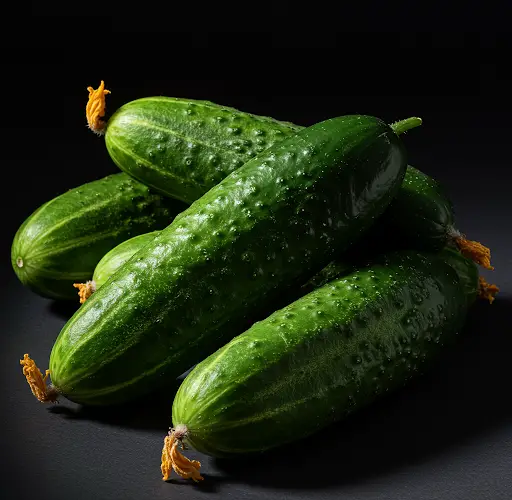Cucumbers are one of the most satisfying vegetables to grow at home. They’re crisp, refreshing, and versatile in the kitchen. But if you’ve ever grown cucumbers and found the harvest less than exciting, there might be a simple solution you’re missing: a climbing trellis.
A well-designed trellis not only helps cucumbers grow vertically, saving space, but also improves air circulation, reduces disease, and encourages more fruit production. With just a few basic materials, you can build a sturdy and effective cucumber trellis at home — no special tools or gardening experience required. Here’s how it’s done.
Why Use a Trellis for Cucumbers?
Cucumbers are natural climbers. In their ideal environment, they sprawl along the ground or climb up surrounding plants and structures. But when grown on the ground, they take up a lot of space and are more prone to pests and diseases. Leaves and fruit sitting on damp soil can lead to rot, mold, and insect infestations.
By training cucumbers to grow vertically, you maximize space and airflow, reduce disease risk, and make harvesting easier. Plus, vertical growth exposes more leaves to sunlight, helping the plant photosynthesize more effectively and encouraging more vigorous fruiting. In many home gardens, using a trellis can nearly double the yield of your cucumber plants.
Materials Needed to Build a Simple Trellis
You don’t need to invest in expensive supplies. Most of what you need can be found around the house or at any basic hardware or gardening store:
-
Two sturdy wooden stakes, bamboo poles, or metal rods (about 4 to 6 feet tall)
-
String, garden twine, or nylon netting
-
Scissors or garden clippers
-
Hammer or shovel (for driving stakes into the ground)
-
Optional: recycled wire mesh, an old ladder frame, or PVC pipes
Step-by-Step Guide to Building a Cucumber Trellis
Step 1: Choose the Right Location
Pick a sunny spot in your garden, balcony, or yard where your cucumbers will receive at least 6–8 hours of sunlight daily. If you’re growing cucumbers in containers, place the container near a wall or railing where the trellis can be anchored.
Step 2: Set Up the Frame
Drive your two vertical support stakes into the soil about 18–24 inches apart. Make sure they’re deep enough to support the weight of the growing cucumber vines and fruits — about 8–12 inches into the ground is usually sufficient.
If using bamboo poles or PVC pipes, you can lash them together at the top to form an A-frame, or keep them parallel and connect them across the top with another pole or stick to stabilize the structure.
Step 3: Add Netting or Twine
Now it’s time to create the climbing surface. You can use nylon trellis netting, old wire fencing, or simple string tied in horizontal and vertical rows between the two poles. Make sure the spaces in the netting are big enough for your hands to reach through for harvesting (4–6 inch squares are ideal).
Tie the string securely at regular intervals, or attach your netting tightly from the base to the top of the poles. The idea is to give the cucumber tendrils something to grab onto as they climb upward.
Training Your Cucumbers to Climb
Once the cucumber seedlings are a few inches tall and have their first sets of true leaves, you can begin training them to climb the trellis. Gently guide the vines toward the netting and secure them loosely with garden ties or soft strips of cloth if needed. Cucumbers are natural climbers, so once they find the support, they’ll wrap their tendrils around it and climb on their own.
Continue to guide any straying vines toward the trellis as the plants grow. Regularly check that the vines are supported and untangle any parts that are growing too close together.
Maintenance and Harvesting
Vertical cucumber growing makes it easier to monitor plant health. You’ll quickly notice yellowing leaves, signs of pests, or overripe fruit — all of which are harder to catch in ground-sprawling growth.
Be sure to water cucumbers consistently, especially during hot weather. They love moisture but hate soggy roots, so ensure the soil drains well. Fertilize every 2–3 weeks with a balanced or low-nitrogen fertilizer to support flowering and fruiting.
Harvest cucumbers frequently once they begin to mature. Regular harvesting encourages the plant to produce more fruit and prevents cucumbers from becoming overly large and bitter.
Bonus Tip: Make It Multi-Purpose
The same trellis you build for cucumbers can also support other climbing plants like beans, peas, and gourds. Consider rotating your crops or interplanting for greater productivity in a small space.
Final Thoughts
Building a simple trellis for your cucumbers is one of the most effective ways to increase your harvest, reduce disease, and keep your garden neat. It’s easy, inexpensive, and requires only a bit of space and basic materials.
Once your cucumbers start climbing and producing fruits at eye level, you’ll appreciate the convenience, cleanliness, and boosted yield. It’s a game-changing trick every home gardener should try.
